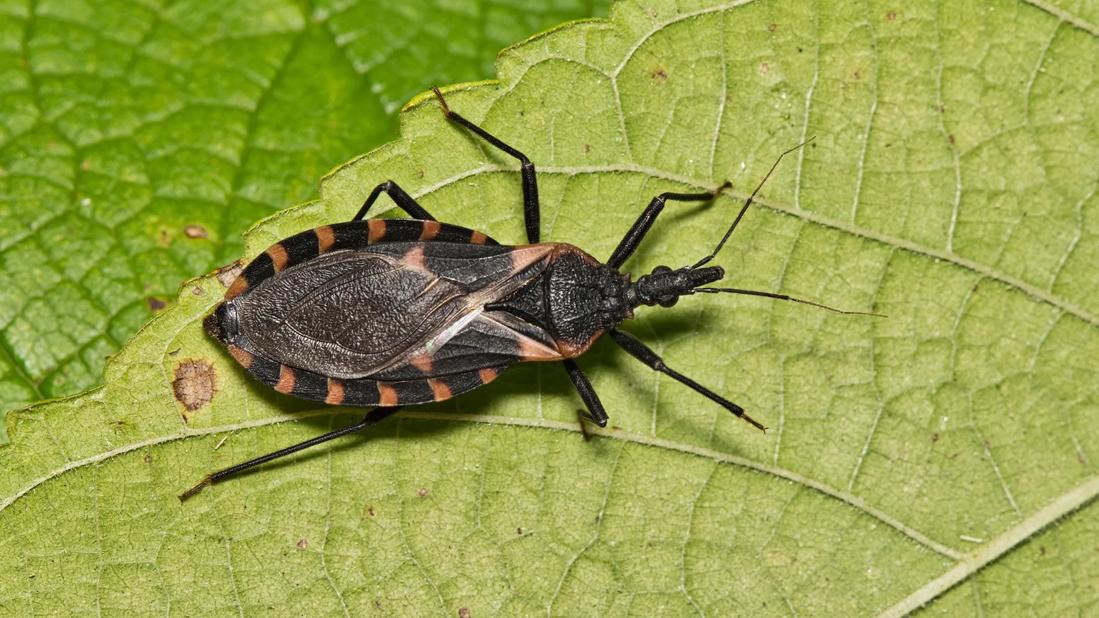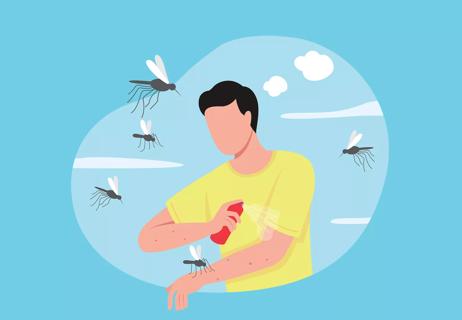Kissing bugs are insects that can carry a dangerous parasite that causes Chagas disease

Few things in this world can give you the creepy-crawlies quite like bugs. And while some insects may be no more than mere annoyances, kissing bugs and their bites can have some serious, even life-threatening, effects.
Advertisement
Cleveland Clinic is a non-profit academic medical center. Advertising on our site helps support our mission. We do not endorse non-Cleveland Clinic products or services. Policy
We talked with family medicine physician Jeffrey Brown, DO, about kissing bugs and your risk.
Kissing bugs (or triatomine bugs, if you want to be scientific about it) are insects in the Reduviidae family — putting them in company with meanies like assassin bugs and ambush bugs.
Kissing bugs are mostly black or dark brown, and some have small orange or red markings. Adults can fly and measure about an inch long.
They’re common in 21 countries, including Mexico and parts of Central and South America, where they’re considered endemic, meaning they’re common and constantly present.
The problem with kissing bugs is that they can be carriers of a parasite that causes Chagas disease. And left untreated, Chagas disease can be fatal.
Here’s how it happens.
Advertisement
“The initial symptoms can be mild or nonexistent. But over time, Chagas disease can lead to serious heart and digestive issues,” Dr. Brown reports. “It can affect your heart and lead to cardiac arrest or heart failure. If it affects your gastrointestinal tract, you can get ‘megacolon,’ an enlargement of the colon that can be quite severe.”
Kissing bugs are a major public health issue in endemic areas, where housing structures made of mud and straw provide ideal environments for the bugs to thrive.
Kissing bugs exist in other regions, too, including some states in the southern U.S. But in much smaller numbers. Cases of locally transmitted Chagas disease are much lower outside of endemic regions, mostly because housing there is less hospitable to the bugs.
Your risk of getting Chagas disease from a kissing bug bite depends a lot on geography.
Let’s look at the data: About 6 million to 7 million people around the world have Chagas disease. The vast majority live in Latin America.
In 2022, researchers estimated that 288,000 people in the U.S. had Chagas disease. That’s less than 0.09% of the nation’s population. Data isn’t clear on whether they were infected while living in the U.S. or if they acquired it while living in or visiting endemic regions. But Dr. Brown says it’s believed the vast majority of people in the U.S. with Chagas disease were infected in Latin America.
Why so low outside of endemic areas?
Not all kissing bugs carry the Trypanosoma cruzi parasite. Researchers estimate that about 55% of kissing bugs worldwide are carriers. That happens when the bug bites a person or animal that is already infected. That means that if you live in an area where kissing bugs are everywhere and your neighbors are carriers of the parasite, your risk is highest.
On the other hand, if you live in a community with a very low incidence of Chagas disease, the random kissing bug you encounter on your walk in the park isn’t very likely to have gotten the parasite, let alone pass it on to you.
And remember, Chagas disease can’t be passed from person to person (the exception being that it can be passed to a fetus during pregnancy).
“It’s not a contagious disease. You get it from getting bitten by an infested kissing bug, not directly from other people,” Dr. Brown reiterates.
If you get bitten by a kissing bug, there are steps you can take to minimize your risk for Chagas disease.
“The best thing you can do is to wash the affected area immediately with warm, soapy water, and don’t scratch the area,” Dr. Brown advises. “Washing can help to keep any parasites from entering your body.”
Advertisement
That way, if the bug was carrying a parasite, you can be more confident it won’t enter your body.
And if you’re feeling ill after getting bitten by a kissing bug, seek medical care quickly. A healthcare provider can screen you for signs of a parasitic infection and start treatment early. That’s important because early treatment can help prevent long-term troubles with Chagas disease.
Bottom line? Despite their cutesy name, kissing bugs are a major health concern in some parts of the world. If you live in or travel to places where they’re common, be on the lookout for bugs and bug bites, and use insecticide and mosquito nets to help keep them at bay. And if you think you could be at risk, talk with a healthcare provider about screening and early treatment.
Advertisement
Learn more about our editorial process.
Advertisement

Keep ‘mozzies’ at bay by avoiding scented body products, beer and certain colored clothes

Vanilla extract won’t keep mosquitoes away for long, if at all — and could even attract other bugs, like wasps or flies

Alpha-gal syndrome has become more common and is a leading cause of anaphylaxis

These red, raised bites often show up in a zigzag pattern on areas of your skin that come into contact with bedding

Twice daily tick checks, the right bug sprays and long pants can help you prevent tick-borne diseases

Bug bites create tiny openings in your skin that can let in dangerous bacteria

Using insect repellent, covering up and keeping your property dry can help keep the buggers at bay

Whether you scrape or pull out the stinger, the key is to do it quickly

Babies can get congested easily, but you can calm their cough by keeping them hydrated, using nasal drops and running a humidifier

Weight loss may cause loose, sagging skin and muscle loss to your rear

Several conditions, like vitiligo and fungal infection, can cause a loss of pigmentation, leading to white spots or patches on your skin